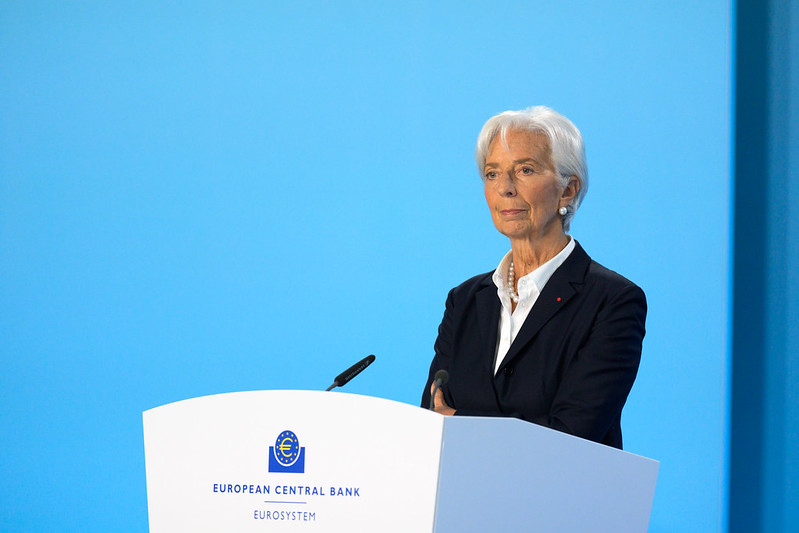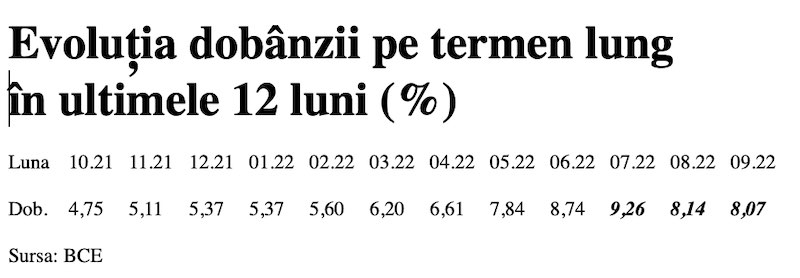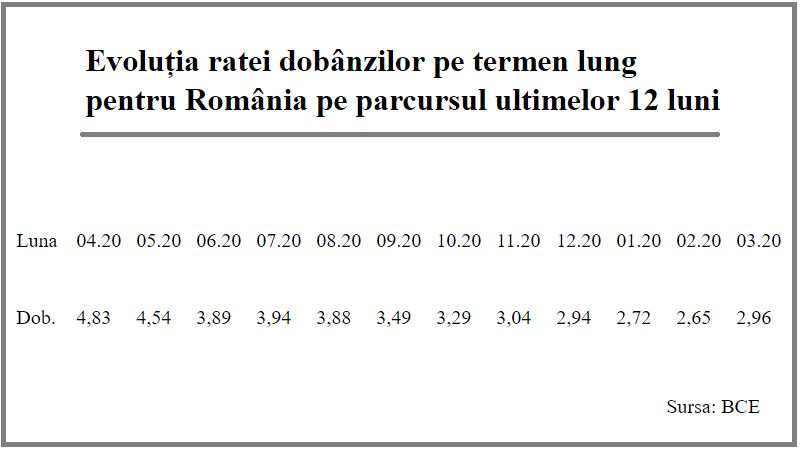Jean-Claude Trichet: Introductory statement to the press conference
 Autor: Bancherul.ro
Autor: Bancherul.ro
2011-06-09 15:51
Introductory statement to the press conference
Jean-Claude Trichet, President of the ECB,
Vítor Constâncio, Vice-President of the ECB,
Frankfurt am Main, 9 June 2011
Ladies and gentlemen, the Vice-President and I are very pleased to welcome you to our press conference. We will now report on the outcome of today's meeting, which was also attended by Commissioner Rehn.
Based on its regular economic and monetary analyses, the Governing Council decided to keep the key ECB interest rates unchanged. The information that has become available since our meeting on 5 May 2011 confirms continued upward pressure on overall inflation, mainly owing to energy and commodity prices. The underlying pace of monetary expansion is gradually recovering. Monetary liquidity remains ample, with the potential to accommodate price pressures in the euro area. Furthermore, the most recent data confirm the positive underlying momentum of economic activity in the euro area, while uncertainty remains elevated. Overall, our monetary policy stance remains accommodative, lending support to economic activity. On balance, risks to the outlook for price stability are on the upside. Accordingly, strong vigilance is warranted. On the basis of our assessment, we will act in a firm and timely manner. We will do all that is needed to prevent recent price developments giving rise to broad-based inflationary pressures. We remain strongly determined to secure a firm anchoring of inflation expectations in the euro area in line with our aim of maintaining inflation rates below, but close to, 2% over the medium term. This is a prerequisite for monetary policy to make an ongoing contribution towards supporting growth and job creation in the euro area.
The Governing Council today also decided to continue conducting its main refinancing operations (MROs) as fixed rate tender procedures with full allotment for as long as necessary, and at least until the end of the ninth maintenance period of 2011 on 11 October 2011. This procedure will also remain in use for the Eurosystem’s special-term refinancing operations with a maturity of one maintenance period, which will continue to be conducted for as long as needed, and at least until the end of the third quarter of 2011. The fixed rate in these special-term refinancing operations will be the same as the MRO rate prevailing at the time. Furthermore, the Governing Council decided to conduct the three-month longer-term refinancing operations (LTROs) to be allotted on 27 July, 31 August and 28 September 2011 as fixed rate tender procedures with full allotment. The rates in these three-month operations will be fixed at the average rate of the MROs over the life of the respective LTRO.
As stated on previous occasions, the provision of liquidity and the allotment modes for refinancing operations will be adjusted when appropriate, taking into account the fact that all the non-standard measures taken during the period of acute financial market tensions are, by construction, temporary in nature.
Let me now explain our assessment in greater detail, starting with the economic analysis. In the first quarter of 2011, the euro area recorded strong real GDP growth of 0.8% quarter-on-quarter, following the 0.3% increase of the fourth quarter of 2010. Recent statistical releases and survey-based indicators point towards a continued expansion of economic activity in the euro area in the second quarter of this year, albeit at a slower pace. This easing reflects the fact that the strong growth in the first quarter was partly due to special factors, which will cease to play a role in the second quarter. Hence, it is appropriate to look through such short-term volatility and to emphasise the positive underlying momentum of economic activity in the euro area. Looking ahead, euro area exports should be supported by the ongoing expansion in the world economy. At the same time, taking into account the favourable level of business confidence in the euro area, private sector domestic demand should contribute increasingly to economic growth, benefiting from the still accommodative monetary policy stance and the measures adopted to improve the functioning of the financial system. However, activity is expected to continue to be dampened somewhat by the process of balance sheet adjustment in various sectors.
This assessment is also reflected in the June 2011 Eurosystem staff macroeconomic projections for the euro area, which foresee annual real GDP growth in a range between 1.5% and 2.3 % in 2011 and between 0.6 % and 2.8% in 2012. Compared with the March 2011 ECB staff macroeconomic projections, the range for 2011 has been revised upwards, while the range for 2012 remains broadly unchanged. The June 2011 Eurosystem staff projections are broadly in line with recent forecasts by international organisations.
In the Governing Council’s assessment, the risks to this economic outlook remain broadly balanced in an environment of elevated uncertainty. On the one hand, favourable business confidence could provide more support to domestic economic activity in the euro area than currently expected and higher foreign demand could also contribute more strongly to growth than expected. On the other hand, downside risks relate to the ongoing tensions in some segments of the financial markets that may potentially spill over to the euro area real economy. Downside risks also relate to further increases in energy prices, protectionist pressures and the possibility of a disorderly correction of global imbalances.
With regard to price developments, euro area annual HICP inflation was 2.7% in May according to Eurostat’s flash estimate, after 2.8% in April. The relatively high inflation rates seen over the past few months largely reflect higher energy and commodity prices. Looking ahead, inflation rates are likely to stay clearly above 2% over the coming months. Upward pressure on inflation, mainly from energy and commodity prices, is also discernible in the earlier stages of the production process. It remains of paramount importance that the rise in HICP inflation does not translate into second-round effects in price and wage-setting behaviour and lead to broad-based inflationary pressures. Inflation expectations must remain firmly anchored in line with the Governing Council’s aim of maintaining inflation rates below, but close to, 2% over the medium term.
The June 2011 Eurosystem staff macroeconomic projections for the euro area foresee annual HICP inflation in a range between 2.5% and 2.7% for 2011 and between 1.1% and 2.3% for 2012. In comparison with the March 2011 ECB staff macroeconomic projections, the range for HICP inflation in 2011 has been revised upwards, largely reflecting higher energy prices. The projection range for 2012 has narrowed somewhat. It is appropriate to recall that the staff projections are conditional on a number of purely technical assumptions, including oil prices, interest rates and exchange rates. In particular, it is assumed that oil prices will decline somewhat and that short-term interest rates will rise, in accordance with market expectations. Overall the projections embody the view that the recent high rates of inflation do not lead to broader-based inflationary pressure in the euro area.
Risks to the medium-term outlook for price developments remain on the upside. They relate, in particular, to higher than assumed increases in energy prices. Furthermore, there is a risk of increases in indirect taxes and administered prices that may be greater than currently assumed, owing to the need for fiscal consolidation in the coming years. Finally, upside risks may come from stronger than expected domestic price pressures in the context of increasing capacity utilisation in the euro area.
Turning to the monetary analysis, the annual growth rate of M3 was 2.0% in April 2011, after 2.3% in March. Looking through the recent volatility in broad money growth, M3 growth has continued to edge up over recent months. The annual growth rate of loans to the private sector strengthened slightly to 2.6% in April, after 2.5% in March. Overall, the underlying pace of monetary expansion is gradually recovering. At the same time, monetary liquidity accumulated prior to the period of financial market tensions remains ample, with the potential to accommodate price pressures in the euro area.
Looking at M3 components, the annual growth rate of M1 decreased in April, while that of other short-term deposits increased. The development partly reflects the gradual increase in the remuneration of these deposits over recent months. At the same time, the steep yield curve implies a dampening impact on overall M3 growth, as it reduces the attractiveness of monetary assets compared with more highly remunerated longer-term instruments outside M3. However, available information suggests that this impact may be waning.
On the counterpart side, there has been a further slight strengthening in the growth of loans to non-financial corporations, which rose to 1.0% in April, after 0.8% in March. The growth of loans to households was 3.4% in April, unchanged from the previous month. The latest data confirm a continued gradual strengthening in the annual growth of lending to the non-financial private sector.
The overall size of bank balance sheets has remained broadly unchanged over the past few months, notwithstanding some volatility. It is important that banks continue to expand the provision of credit to the private sector in an environment of increasing demand. To address this challenge, where necessary, it is essential for banks to retain earnings, to turn to the market to strengthen further their capital bases or to take full advantage of government support measures for recapitalisation. In particular, banks that currently have limited access to market financing urgently need to increase their capital and their efficiency.
To sum up, based on its regular economic and monetary analyses, the Governing Council decided to keep the key ECB interest rates unchanged. The information that has become available since our meeting on 5 May 2011 confirms continued upward pressure on overall inflation, mainly owing to energy and commodity prices. A cross-check of the outcome of the economic analysis with that of the monetary analysis indicates that the underlying pace of monetary expansion is gradually recovering. Monetary liquidity remains ample, with the potential to accommodate price pressures in the euro area. Furthermore, the most recent data confirm the positive underlying momentum of economic activity in the euro area, while uncertainty remains elevated. Overall, our monetary policy stance remains accommodative, lending support to economic activity. On balance, risks to the outlook for price stability are on the upside. Accordingly, strong vigilance is warranted. On the basis of our assessment, we will act in a firm and timely manner. We will do all that is needed to prevent recent price developments giving rise to broad-based inflationary pressures. We remain strongly determined to secure a firm anchoring of inflation expectations in the euro area in line with our aim of maintaining inflation rates below, but close to, 2% over the medium term. This is a prerequisite for monetary policy to make an ongoing contribution towards supporting growth and job creation in the euro area.
Turning to fiscal policies, all parties involved in the preparation of the 2012 national budgets must ensure that they are fully in line with the requirement to support confidence in fiscal policies. A comparison between the latest economic forecasts by the European Commission and the fiscal plans embodied in the stability programmes points to the need for many countries to underpin their budget targets with concrete consolidation measures in order to correct their excessive deficits by the commonly agreed deadlines. The implementation of credible fiscal adjustment strategies is crucial in view of ongoing financial market pressures.
At the same time, the implementation of ambitious and far-reaching structural reforms is urgently required in the euro area to strengthen substantially its competitiveness, flexibility and longer-term growth potential. In particular, countries which have high fiscal and external deficits or which are suffering from a loss of competitiveness should rapidly carry out comprehensive economic reforms. In the case of product markets, policies that enhance competition and innovation should be vigorously pursued to facilitate productivity growth. Regarding the labour market, the priority must be to enhance wage flexibility and incentives to work, and to remove labour market rigidities.
We are now at your disposal for questions.
European Central Bank
Directorate Communications
Press and Information Division
Comentarii
Adauga un comentariu
Adauga un comentariu folosind contul de Facebook
Alte stiri din categoria: Noutati BCE
Banca Centrala Europeana (BCE) explica de ce a majorat dobanda la 2%
Banca Centrala Europeana (BCE) explica de ce a majorat dobanda la 2%, in cadrul unei conferinte de presa sustinute de Christine Lagarde, președinta BCE, si Luis de Guindos, vicepreședintele BCE. Iata textul publicat de BCE: DECLARAȚIE DE POLITICĂ MONETARĂ detalii
BCE creste dobanda la 2%, dupa ce inflatia a ajuns la 10%
Banca Centrala Europeana (BCE) a majorat dobanda de referinta pentru tarile din zona euro cu 0,75 puncte, la 2% pe an, din cauza cresterii substantiale a inflatiei, ajunsa la aproape 10% in septembrie, cu mult peste tinta BCE, de doar 2%. In aceste conditii, BCE a anuntat ca va continua sa majoreze dobanda de politica monetara. De asemenea, BCE a luat masuri pentru a reduce nivelul imprumuturilor acordate bancilor in perioada pandemiei coronavirusului, prin majorarea dobanzii aferente acestor facilitati, denumite operațiuni țintite de refinanțare pe termen mai lung (OTRTL). Comunicatul BCE Consiliul guvernatorilor a decis astăzi să majoreze cu 75 puncte de bază cele trei rate ale dobânzilor detalii
Dobânda pe termen lung a continuat să scadă in septembrie 2022. Ecartul față de Polonia și Cehia, redus semnificativ
Dobânda pe termen lung pentru România a scăzut în septembrie 2022 la valoarea medie de 8,07%, potrivit datelor publicate de Banca Centrală Europeană. Acest indicator, cu referința la un termen de 10 ani (10Y), a continuat astfel tendința detalii
Rata dobanzii pe termen lung pentru Romania, in crestere la 2,96%
Rata dobânzii pe termen lung pentru România a crescut la 2,96% în luna martie 2021, de la 2,65% în luna precedentă, potrivit datelor publicate de Banca Centrală Europeană. Acest indicator critic pentru plățile la datoria externă scăzuse anterior timp de șapte luni detalii
- BCE recomanda bancilor sa nu plateasca dividende
- Modul de functionare a relaxarii cantitative (quantitative easing – QE)
- Dobanda la euro nu va creste pana in iunie 2020
- BCE trebuie sa fie consultata inainte de adoptarea de legi care afecteaza bancile nationale
- BCE a publicat avizul privind taxa bancara
- BCE va mentine la 0% dobanda de referinta pentru euro cel putin pana la finalul lui 2019
- ECB: Insights into the digital transformation of the retail payments ecosystem
- ECB introductory statement on Governing Council decisions
- Speech by Mario Draghi, President of the ECB: Sustaining openness in a dynamic global economy
- Deciziile de politica monetara ale BCE
Profil de Bancher
-
Ana Cernat, Vicepresedinte executiv
Idea Bank

Ana are o experienta de peste 14 ani in domeniul ... vezi profil
Criza COVID-19
- In majoritatea unitatilor BRD se poate intra fara certificat verde
- La BCR se poate intra fara certificat verde
- Firmele, obligate sa dea zile libere parintilor care stau cu copiii in timpul pandemiei de coronavirus
- CEC Bank: accesul in banca se face fara certificat verde
- Cum se amana ratele la creditele Garanti BBVA
Topuri Banci
- Topul bancilor dupa active si cota de piata in perioada 2022-2015
- Topul bancilor cu cele mai mici dobanzi la creditele de nevoi personale
- Topul bancilor la active in 2019
- Topul celor mai mari banci din Romania dupa valoarea activelor in 2018
- Topul bancilor dupa active in 2017
Asociatia Romana a Bancilor (ARB)
- Băncile din România nu au majorat comisioanele aferente operațiunilor în numerar
- Concurs de educatie financiara pentru elevi, cu premii in bani
- Creditele acordate de banci au crescut cu 14% in 2022
- Romanii stiu educatie financiara de nota 7
- Gradul de incluziune financiara in Romania a ajuns la aproape 70%
ROBOR
- ROBOR: ce este, cum se calculeaza, ce il influenteaza, explicat de Asociatia Pietelor Financiare
- ROBOR a scazut la 1,59%, dupa ce BNR a redus dobanda la 1,25%
- Dobanzile variabile la creditele noi in lei nu scad, pentru ca IRCC ramane aproape neschimbat, la 2,4%, desi ROBOR s-a micsorat cu un punct, la 2,2%
- IRCC, indicele de dobanda pentru creditele in lei ale persoanelor fizice, a scazut la 1,75%, dar nu va avea efecte imediate pe piata creditarii
- Istoricul ROBOR la 3 luni, in perioada 01.08.1995 - 31.12.2019
Taxa bancara
- Normele metodologice pentru aplicarea taxei bancare, publicate de Ministerul Finantelor
- Noul ROBOR se va aplica automat la creditele noi si prin refinantare la cele in derulare
- Taxa bancara ar putea fi redusa de la 1,2% la 0,4% la bancile mari si 0,2% la cele mici, insa bancherii avertizeaza ca indiferent de nivelul acesteia, intermedierea financiara va scadea iar dobanzile vor creste
- Raiffeisen anunta ca activitatea bancii a incetinit substantial din cauza taxei bancare; strategia va fi reevaluata, nu vor mai fi acordate credite cu dobanzi mici
- Tariceanu anunta un acord de principiu privind taxa bancara: ROBOR-ul ar putea fi inlocuit cu marja de dobanda a bancilor
Statistici BNR
- Deficitul contului curent după primele două luni, mai mare cu 25%
- Deficitul contului curent, -0,39% din PIB după prima lună a anului
- Deficitul contului curent, redus cu 17%
- Inflatia a încheiat anul 2023 la 6,61%, semnificativ sub prognoza oficială
- Deficitul contului curent, redus cu o cincime după primele zece luni ale anului
Legislatie
- Legea nr. 311/2015 privind schemele de garantare a depozitelor şi Fondul de garantare a depozitelor bancare
- Rambursarea anticipata a unui credit, conform OUG 50/2010
- OUG nr.21 din 1992 privind protectia consumatorului, actualizata
- Legea nr. 190 din 1999 privind creditul ipotecar pentru investiții imobiliare
- Reguli privind stabilirea ratelor de referinţă ROBID şi ROBOR
Lege plafonare dobanzi credite
- BNR propune Parlamentului plafonarea dobanzilor la creditele bancilor intre 1,5 si 4 ori peste DAE medie, in functie de tipul creditului; in cazul IFN-urilor, plafonarea dobanzilor nu se justifica
- Legile privind plafonarea dobanzilor la credite si a datoriilor preluate de firmele de recuperare se discuta in Parlament (actualizat)
- Legea privind plafonarea dobanzilor la credite nu a fost inclusa pe ordinea de zi a comisiilor din Camera Deputatilor
- Senatorul Zamfir, despre plafonarea dobanzilor la credite: numai bou-i consecvent!
- Parlamentul dezbate marti legile de plafonare a dobanzilor la credite si a datoriilor cesionate de banci firmelor de recuperare (actualizat)
Anunturi banci
- Bancile comunica automat cu ANAF situatia popririlor
- BRD bate recordul la credite de consum, in ciuda dobanzilor mari, si obtine un profit ridicat
- CEC Bank a preluat Fondul de Garantare a Creditului Rural
- BCR aproba credite online prin aplicatia George, dar contractele se semneaza la banca
- Aplicatia Eximbank, indisponibila temporar
Analize economice
- Deficitul comercial lunar a revenit peste cota de 2 miliarde euro
- România, 78% din media UE la PIB/locuitor în 2023
- România - prima în UE la inflație, prin efect de bază
- Inflația anuală, în scădere la 7,23%
- Avansul PIB pe 2023, recalculat la 2,1%. Rezultatul nominal, majorat cu circa 15 miliarde lei
Ministerul Finantelor
- Datoria publică, imediat sub pragul de 50% din PIB la începutul anului 2024
- Deficitul bugetar, deja -1,67% din PIB după primele două luni
- Datoria publică, sub pragul de 50% din PIB la finele anului 2023
- Deficitul bugetar, din ce în ce mai mare la început de an
- Deficitul bugetar după 8 luni, încă mai mare față de rezultatul din anul trecut
Biroul de Credit
- FUNDAMENTAREA LEGALITATII PRELUCRARII DATELOR PERSONALE IN SISTEMUL BIROULUI DE CREDIT
- BCR: prelucrarea datelor personale la Biroul de Credit
- Care banci si IFN-uri raporteaza clientii la Biroul de Credit
- Ce trebuie sa stim despre Biroul de Credit
- Care este procedura BCR de raportare a clientilor la Biroul de Credit
Procese
- Un client Credius obtine in justitie anularea creditului, din cauza dobanzii prea mari
- Hotararea judecatoriei prin care Aedificium, fosta Raiffeisen Banca pentru Locuinte, si statul sunt obligati sa achite unui client prima de stat
- Decizia Curtii de Apel Bucuresti in procesul dintre Raiffeisen Banca pentru Locuinte si Curtea de Conturi
- Vodafone, obligata de judecatori sa despagubeasca un abonat caruia a refuzat sa-i repare un telefon stricat sau sa-i dea banii inapoi (decizia instantei)
- Taxa de reziliere a abonamentului Vodafone inainte de termen este ilegala (decizia definitiva a judecatorilor)
Stiri economice
- Inflația anuală a revenit la nivelul de la finele anului anterior
- Pensia reală de asigurări sociale de stat a crescut anul trecut cu 2,9%
- Producția de cereale boabe pe 2023, cu o zecime mai mare față de anul precedent
- România, țara UE cu cea mai mare creștere a costului salarial
- Deficitul comercial în prima lună a anului, la cea mai mică valoare din septembrie 2021 încoace
Statistici
- Care este valoarea salariului minim brut si net pe economie in 2024?
- Cat va fi salariul brut si net in Romania in 2024, 2025, 2026 si 2027, conform prognozei oficiale
- România, pe ultimul loc în UE la evoluția productivității muncii în agricultură
- INS: Veniturile romanilor au crescut anul trecut cu 10%. Banii de mancare, redistribuiti cu precadere spre locuinta, transport si haine
- Inflatia anuala - 13,76% in aprilie 2022 si va ramane cu doua cifre pana la mijlocul anului viitor
FNGCIMM
- Programul IMM Invest continua si in 2021
- Garantiile de stat pentru credite acordate de FNGCIMM au crescut cu 185% in 2020
- Programul IMM invest se prelungeste pana in 30 iunie 2021
- Firmele pot obtine credite bancare garantate si subventionate de stat, pe baza facturilor (factoring), prin programul IMM Factor
- Programul IMM Leasing va fi operational in perioada urmatoare, anunta FNGCIMM
Calculator de credite
- ROBOR la 3 luni a scazut cu aproape un punct, dupa masurile luate de BNR; cu cat se reduce rata la credite?
- In ce mall din sectorul 4 pot face o simulare pentru o refinantare?
Noutati BCE
- Acord intre BCE si BNR pentru supravegherea bancilor
- Banca Centrala Europeana (BCE) explica de ce a majorat dobanda la 2%
- BCE creste dobanda la 2%, dupa ce inflatia a ajuns la 10%
- Dobânda pe termen lung a continuat să scadă in septembrie 2022. Ecartul față de Polonia și Cehia, redus semnificativ
- Rata dobanzii pe termen lung pentru Romania, in crestere la 2,96%
Noutati EBA
- Bancile romanesti detin cele mai multe titluri de stat din Europa
- Guidelines on legislative and non-legislative moratoria on loan repayments applied in the light of the COVID-19 crisis
- The EBA reactivates its Guidelines on legislative and non-legislative moratoria
- EBA publishes 2018 EU-wide stress test results
- EBA launches 2018 EU-wide transparency exercise
Noutati FGDB
- Banii din banci sunt garantati, anunta FGDB
- Depozitele bancare garantate de FGDB au crescut cu 13 miliarde lei
- Depozitele bancare garantate de FGDB reprezinta doua treimi din totalul depozitelor din bancile romanesti
- Peste 80% din depozitele bancare sunt garantate
- Depozitele bancare nu intra in campania electorala
CSALB
- La CSALB poti castiga un litigiu cu banca pe care l-ai pierde in instanta
- Negocierile dintre banci si clienti la CSALB, in crestere cu 30%
- Sondaj: dobanda fixa la credite, considerata mai buna decat cea variabila, desi este mai mare
- CSALB: Romanii cu credite caută soluții pentru reducerea ratelor. Cum raspund bancile
- O firma care a facut un schimb valutar gresit s-a inteles cu banca, prin intermediul CSALB
First Bank
- Ce trebuie sa faca cei care au asigurare la credit emisa de Euroins
- First Bank este reprezentanta Eurobank in Romania: ce se intampla cu creditele Bancpost?
- Clientii First Bank pot face plati prin Google Pay
- First Bank anunta rezultatele financiare din prima jumatate a anului 2021
- First Bank are o noua aplicatie de mobile banking
Noutati FMI
- FMI: criza COVID-19 se transforma in criza economica si financiara in 2020, suntem pregatiti cu 1 trilion (o mie de miliarde) de dolari, pentru a ajuta tarile in dificultate; prioritatea sunt ajutoarele financiare pentru familiile si firmele vulnerabile
- FMI cere BNR sa intareasca politica monetara iar Guvernului sa modifice legea pensiilor
- FMI: majorarea salariilor din sectorul public si legea pensiilor ar trebui reevaluate
- IMF statement of the 2018 Article IV Mission to Romania
- Jaewoo Lee, new IMF mission chief for Romania and Bulgaria
Noutati BERD
- Creditele neperformante (npl) - statistici BERD
- BERD este ingrijorata de investigatia autoritatilor din Republica Moldova la Victoria Bank, subsidiara Bancii Transilvania
- BERD dezvaluie cat a platit pe actiunile Piraeus Bank
- ING Bank si BERD finanteaza parcul logistic CTPark Bucharest
- EBRD hails Moldova banking breakthrough
Noutati Federal Reserve
- Federal Reserve anunta noi masuri extinse pentru combaterea crizei COVID-19, care produce pagube "imense" in Statele Unite si in lume
- Federal Reserve urca dobanda la 2,25%
- Federal Reserve decided to maintain the target range for the federal funds rate at 1-1/2 to 1-3/4 percent
- Federal Reserve majoreaza dobanda de referinta pentru dolar la 1,5% - 1,75%
- Federal Reserve issues FOMC statement
Noutati BEI
- BEI a redus cu 31% sprijinul acordat Romaniei in 2018
- Romania implements SME Initiative: EUR 580 m for Romanian businesses
- European Investment Bank (EIB) is lending EUR 20 million to Agricover Credit IFN
Mobile banking
- Comisioanele BRD pentru MyBRD Mobile, MyBRD Net, My BRD SMS
- Termeni si conditii contractuale ale serviciului You BRD
- Recomandari de securitate ale BRD pentru utilizatorii de internet/mobile banking
- CEC Bank - Ghid utilizare token sub forma de card bancar
- Cinci banci permit platile cu telefonul mobil prin Google Pay
Noutati Comisia Europeana
- Avertismentul Comitetului European pentru risc sistemic (CERS) privind vulnerabilitățile din sistemul financiar al Uniunii
- Cele mai mici preturi din Europa sunt in Romania
- State aid: Commission refers Romania to Court for failure to recover illegal aid worth up to €92 million
- Comisia Europeana publica raportul privind progresele inregistrate de Romania in cadrul mecanismului de cooperare si de verificare (MCV)
- Infringements: Commission refers Greece, Ireland and Romania to the Court of Justice for not implementing anti-money laundering rules
Noutati BVB
- BET AeRO, primul indice pentru piata AeRO, la BVB
- Laptaria cu Caimac s-a listat pe piata AeRO a BVB
- Banca Transilvania plateste un dividend brut pe actiune de 0,17 lei din profitul pe 2018
- Obligatiunile Bancii Transilvania se tranzactioneaza la Bursa de Valori Bucuresti
- Obligatiunile Good Pople SA (FRU21) au debutat pe piata AeRO
Institutul National de Statistica
- Comerțul cu amănuntul, în expansiune la început de an
- România, pe locul 2 în UE la creșterea comerțului cu amănuntul în ianuarie 2024
- Comerțul cu amănuntul, în creștere cu 1,9% pe anul 2023
- Comerțul cu amănuntul, în creștere pe final de an
- Comerțul cu amănuntul, stabilizat la +2% față de anul anterior
Informatii utile asigurari
- Data de la care FGA face plati pentru asigurarile RCA Euroins: 17 mai 2023
- Asigurarea împotriva dezastrelor, valabilă și in caz de faliment
- Asiguratii nu au nevoie de documente de confirmare a cutremurului
- Cum functioneaza o asigurare de viata Metropolitan pentru un credit la Banca Transilvania?
- Care sunt documente necesare pentru dosarul de dauna la Cardif?
ING Bank
- La ING se vor putea face plati instant din decembrie 2022
- Cum evitam tentativele de frauda online?
- Clientii ING Bank trebuie sa-si actualizeze aplicatia Home Bank pana in 20 martie
- Obligatiunile Rockcastle, cel mai mare proprietar de centre comerciale din Europa Centrala si de Est, intermediata de ING Bank
- ING Bank transforma departamentul de responsabilitate sociala intr-unul de sustenabilitate
Ultimele Comentarii
-
nevoia de banci
De ce credeti ca acum nu mai avem nevoie de banci si firme de asigurari? Pentru ca acum avem ... detalii
-
Mda
ACUM nu e nevoie de asa ceva .. acum vreo 20 de ani era nevoie ... ACUM de fapt nu mai e asa multa ... detalii
-
oprire pe salariu garanti bank
mi sa virat 2500de lei din care a fost oprit 850 de lei urmand sa mi se deblocheze restul sumei ... detalii
-
Amânare rate
Buna ziua, Am rămas în urma cu ratele , va rog frumos sa ma ajutați cumva , soțul a pierdut ... detalii
-
Am depus bani și nu mi au intrat in cont
Sa se rezolve ... detalii








